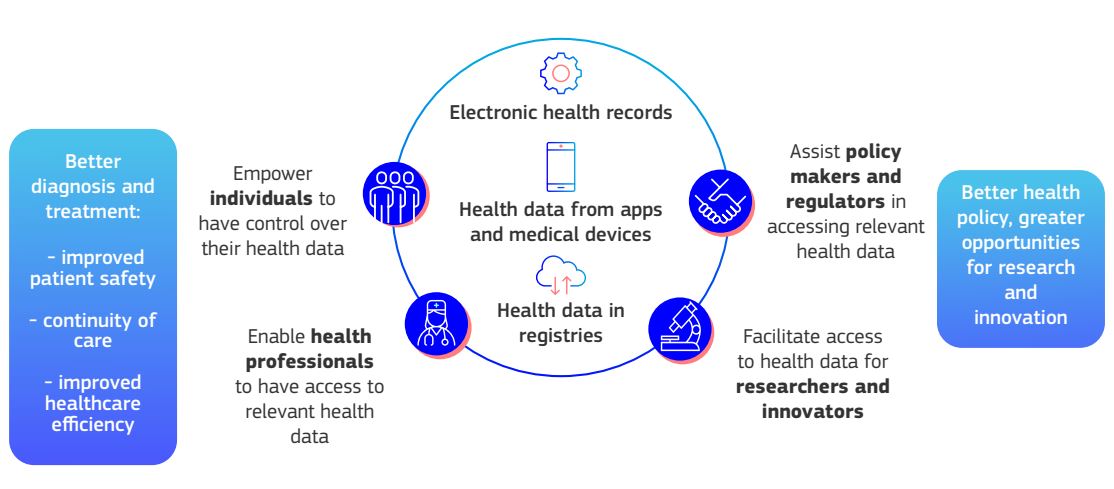Blog post
Data Is Just Data—Until You Do Something With It:
Insights from the ESCORT Project

15 jul. 2025
by Newpark Healthcare
Every time you visit your doctor, check your heart rate on a wearable device, or use an app to track your symptoms, a discrete piece of health data is created. These data creation events happen thousands of times a day across Europe, potentially generating a vast amount of valuable information.
But here’s the catch: data is just data unless you do something with it. In healthcare, where the right information, at the right time, can mean faster diagnoses, better treatment, better outcomes and stronger, more resilient health systems.
What Have We Discovered?
One of the biggest challenges is that much of today’s healthcare data is either not collected at all or is just trapped in siloed databases. Hospitals, clinics, labs, even different departments within the same organisation or facility, often collect data in isolated ways, storing it in systems that don’t communicate with each other.
This slows down care, limits collaboration, and makes it more difficult for healthcare professionals to get the full picture. It also limits the opportunity for research.

Photo from https://www.escortproject.eu/
Interoperability is the ability for different digital systems and devices to communicate seamlessly, but its current implementation is still falling short. Although technical standards exist to enable data sharing, many healthcare providers have not yet fully adopted them. Without consistent implementation, data exchange is patchy and inefficient, leading to duplication, delays, gaps in care and missed opportunities for data re-use in research.
What Can Help?
This is where the European Health Data Space (EHDS) comes in to unlock the future of health data in Europe.
The EHDS will:
-
empower individuals to access, control and share their electronic health data across borders for the healthcare delivery (primary use of data);
-
enable the secure and trustworthy reuse of health data for research, innovation, policy-making, and regulatory activities (secondary use of data);
-
foster a single market for electronic health record (EHR) systems, supporting both primary and secondary use.

Photo from https://www.european-health-data-space.com/
The EHDS aims to enable secure, efficient, and standardised data exchange across all EU member states. Its vision is clear: to allow health data to flow freely and safely, empowering patients and professionals alike. But this vision requires more than just policy, it demands real change on the ground. Countries must invest in interoperable systems, and all stakeholders must commit to common data standards.
And of course, privacy is non-negotiable. People need confidence that their health data is secure, handled ethically, and only used with consent. Balancing innovation with trust is critical to making any data-driven system work.
What Does This Mean?
When data flows securely and consistently between systems, it becomes actionable. Rather than sitting unused, raw data can be transformed into insights that improve decision-making, personalise care, and help healthcare providers respond rapidly to new threats and speed up research.
Who benefits from EHDS?
The European Health Data Space (EHDS) is designed to benefit all EU citizens, including patients, healthcare professionals, researchers, policymakers, and industry players.
At the ESCORT Project, we’re working to make this a reality. By identifying the barriers to data sharing, designing interoperable solutions, and ensuring patients’ privacy is protected, we’re helping to unlock the true potential of health data. Our goal is to turn disconnected facts into meaningful action. We want to make sure that healthcare data isn’t just collected but actually used to improve lives across Europe.
